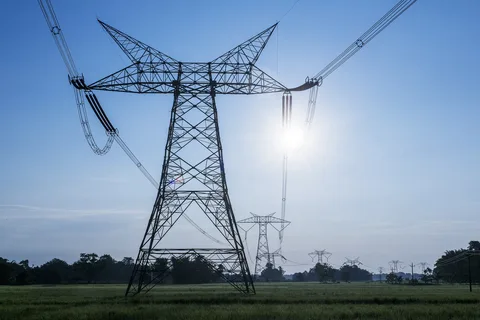The global high-voltage direct current (HVDC) transmission system market is projected to expand significantly, with an estimated market size of USD 22.9 billion in 2025 and USD 64.4 billion by 2035. This anticipated growth represents a CAGR of 10.9% during the forecast period.
As the world pivots toward renewable energy, electrification, and smarter grids, the pressure to move massive amounts of power across vast distances—efficiently, reliably, and sustainably—has never been higher. High Voltage Direct Current (HVDC) transmission systems are rising to meet this challenge, enabling the long-distance, low-loss transmission of electricity across countries, regions, and even under oceans.
Far from being just another piece of electrical infrastructure, HVDC systems are now central to the global transition toward cleaner energy and grid modernization. They are the invisible arteries of the 21st-century power grid—quietly enabling everything from wind farms and solar parks to cross-border energy trading.
Get Ahead with Our Report: Request Your Sample Now!
https://www.futuremarketinsights.com/reports/sample/rep-gb-1209
Beyond AC: Why HVDC Is Built for Modern Power Demands
Traditional AC transmission systems are effective for local distribution, but when it comes to spanning thousands of kilometers, they fall short. Line losses increase, and grid stability becomes harder to maintain. HVDC technology changes the equation.
By converting alternating current to direct current, HVDC systems can transmit electricity over much longer distances with significantly lower losses. This makes them ideal for transporting renewable energy from remote generation sites—like offshore wind farms or desert solar arrays—to population centers and industrial hubs.
Enabling the Renewable Revolution
The rapid expansion of renewable energy has created a new kind of challenge: geography. The best places to harvest wind and solar are rarely close to where the energy is needed. HVDC acts as the bridge between energy-rich and energy-hungry regions, enabling grid operators to tap into green power sources across borders and terrains.
Whether it’s integrating hydroelectric power from mountainous regions or connecting offshore wind farms to the mainland grid, HVDC is making renewable energy more accessible, scalable, and reliable.
Grid Interconnection and Energy Security
As energy markets become more interconnected, HVDC systems are playing a pivotal role in enhancing regional grid stability and energy security. HVDC links between countries allow surplus power to flow where it’s needed most, reduce dependency on fossil fuels, and create a more resilient grid infrastructure.
These interconnectors also act as buffers during emergencies—enabling energy rerouting during outages or demand spikes, and supporting synchronized frequency control between different grid systems.
Compact, Controllable, and Future-Ready
One of HVDC’s key advantages lies in its controllability. HVDC converters allow precise regulation of power flow, voltage levels, and grid synchronization. This not only improves efficiency but also enhances grid reliability in increasingly complex energy systems.
Modern HVDC technologies, such as Voltage Source Converters (VSC), are also compact and modular, making them suitable for urban substations, offshore platforms, and underground installations. Their adaptability makes HVDC a future-ready solution for densely populated cities and remote infrastructure alike.
Exhaustive Market Report: A Complete Study
https://www.futuremarketinsights.com/reports/high-voltage-direct-current-hvdc-transmission-systems-market
Digital Grids Demand Smarter Transmission
As utilities embrace digital transformation, HVDC systems are evolving alongside. Today’s HVDC infrastructure integrates advanced monitoring, diagnostics, and control systems—ensuring real-time visibility and predictive maintenance capabilities.
This digital intelligence enables grid operators to optimize power flow, prevent outages, and respond dynamically to changing energy patterns, paving the way for self-healing, adaptive power networks.
A Quiet Force in the Energy Transition
While wind turbines and solar panels get much of the attention, HVDC systems are the silent enablers making clean energy truly global. They are unlocking the full potential of renewables, reshaping power markets, and laying the groundwork for a connected, resilient energy future.
In an era where every watt counts and every connection matters, HVDC transmission systems stand at the intersection of innovation and necessity—moving power not just across wires, but across borders, economies, and possibilities.



